Modulenotfounderror No Module Named Torch
The “Modulenotfounderror: No module named torch” error is a common issue that occurs when the Torch module is not found or installed in your Python environment. Torch is a popular open-source machine learning library primarily used for deep learning tasks. It provides extensive support for neural networks, tensor computations, and GPU acceleration.
When you encounter this error, it means that the Python interpreter could not find the Torch module in its search path. This can happen due to various reasons, such as an incorrect installation or missing dependencies. Understanding the causes of this error and the steps to troubleshoot it can help you resolve the issue and continue using Torch for your machine learning projects.
Common Causes of the Modulenotfounderror: No Module Named Torch
1. Torch is not installed: The most common cause of this error is the absence of the Torch library in your Python environment. Torch needs to be installed before it can be imported and used in your code. If you haven’t installed Torch yet, this error will occur when you try to import it.
2. Incorrect installation method: Torch can be installed through different methods, such as using pip, conda, or building from source. If you used an incorrect installation method or made a mistake during the installation process, the Torch module may not be found by the Python interpreter.
3. Missing dependencies: Torch has several dependencies that need to be installed along with it. These dependencies include NumPy, Pillow, and others. If any of these dependencies are missing or not installed correctly, the Torch module may fail to import, resulting in the “Modulenotfounderror: No module named torch” error.
Troubleshooting Steps for the Modulenotfounderror: No Module Named Torch
To resolve the “Modulenotfounderror: No module named torch” error, you can follow the troubleshooting steps below:
1. Check Torch installation: Verify whether Torch is installed in your Python environment. Open a terminal or command prompt and type “pip list” or “conda list” to see a list of installed packages. Look for “torch” or “torchvision” in the list. If they are not present, you need to install Torch using the appropriate installation method.
2. Use the correct installation method: Depending on your Python environment and preferences, choose the correct installation method for Torch. If you are using pip, run the command “pip install torch” or “pip install torchvision” to install Torch and its dependencies. For conda, you can use “conda install pytorch torchvision torchaudio cudatoolkit=XX.X -c pytorch” to install Torch.
3. Install missing dependencies: If you have installed Torch but still encounter the error, ensure that all the required dependencies are installed. Use the package manager (pip or conda) to install any missing dependencies. For example, run “pip install numpy” to install NumPy or “conda install pillow” to install Pillow.
4. Verify Python interpreter: Check that you are using the correct Python interpreter that has the Torch module installed. Sometimes, multiple Python versions or virtual environments can cause conflicts. Make sure you are running your code in the correct environment or update the environment with the required dependencies.
Installing Torch: A Solution to Fix Modulenotfounderror
To install Torch and resolve the “Modulenotfounderror: No module named torch” error, follow these steps:
1. Using pip: Open a terminal or command prompt and run the command “pip install torch” to install Torch. This command will install the latest stable version of Torch.
2. Using conda: If you have the conda package manager installed, you can use it to install Torch. Run the command “conda install pytorch torchvision torchaudio cudatoolkit=XX.X -c pytorch” to install Torch and its dependencies. Replace “XX.X” with the appropriate CUDA version if you want to enable GPU acceleration.
Alternative Options to Torch for Deep Learning Tasks
If you encounter issues with installing or using Torch, there are alternative options available for deep learning tasks. Some popular alternatives include:
1. TensorFlow: Developed by Google, TensorFlow is another widely-used open-source machine learning library that offers support for deep learning tasks. It has a comprehensive ecosystem and provides efficient computations using both CPUs and GPUs.
2. Keras: Keras is a high-level neural networks API that can run on top of various deep learning libraries, including TensorFlow. It provides a user-friendly interface for building and training neural networks.
3. Theano: Theano is a Python library that allows efficient mathematical computations using GPUs. While it is primarily a numerical computation library, it also provides features for building and training neural networks.
Best Practices to Avoid Modulenotfounderror: No Module Named Torch
To avoid the “Modulenotfounderror: No module named torch” error, consider the following best practices:
1. Use the correct installation method: Make sure you use the right installation method for Torch based on your Python environment. Using pip or conda ensures that all the necessary dependencies are installed correctly.
2. Keep dependencies up to date: Regularly update the Torch library and its dependencies to benefit from bug fixes, performance improvements, and new features. Use the package manager to upgrade the libraries when new versions are available.
3. Create a virtual environment: Creating a virtual environment can help isolate your Python projects and prevent dependency conflicts. Use tools like virtualenv or conda environments to set up a dedicated environment for your Torch projects.
4. Check compatibility: Ensure that the version of Torch you are using is compatible with your Python version and other libraries you are using. Incompatibilities can cause import errors, so it’s crucial to check compatibility before installation.
FAQs
Q1. Why am I getting the “Modulenotfounderror: No module named torch” error?
A1. This error occurs when the Torch module is not found or installed in your Python environment. You need to install Torch using pip or conda before you can import it.
Q2. How do I install Torch using pip?
A2. Open a terminal or command prompt and run the command “pip install torch”. This command will install the latest version of Torch and its dependencies.
Q3. Can I install Torch using conda?
A3. Yes, you can install Torch using conda. Run the command “conda install pytorch torchvision torchaudio cudatoolkit=XX.X -c pytorch” to install Torch and its dependencies. Replace “XX.X” with the appropriate CUDA version if you want to enable GPU acceleration.
Q4. What are some alternative options to Torch for deep learning tasks?
A4. TensorFlow, Keras, and Theano are popular alternatives to Torch for deep learning tasks. These libraries offer similar capabilities and can be used as alternatives depending on your preferences and requirements.
Q5. How can I avoid the “Modulenotfounderror: No module named torch” error?
A5. Ensure that Torch is correctly installed in your Python environment using pip or conda. Keep your dependencies up to date, create virtual environments, and check compatibility with other libraries to avoid import errors.
Python | Anaconda: Modulenotfounderror: No Module Named ‘Torch’ #4827
Keywords searched by users: modulenotfounderror no module named torch Pip install torch, Install torch, Conda install torch, Import torch could not be resolved, Install torch CUDA, PyTorch, Torch not compiled with CUDA enabled pycharm, Torch==1.13 1 cu117
Categories: Top 69 Modulenotfounderror No Module Named Torch
See more here: nhanvietluanvan.com
Pip Install Torch
Python is one of the most popular programming languages used for various applications, including machine learning and artificial intelligence. To leverage the power of Python for deep learning tasks, developers often rely on libraries like PyTorch. In this article, we will explore the process of installing PyTorch using the pip package manager, delve into its significance, and address some frequently asked questions along the way.
What is PyTorch?
PyTorch is an open-source machine learning library built on the Torch library, primarily developed by Facebook’s AI Research lab. It is widely used for tasks such as natural language processing, computer vision, and reinforcement learning. PyTorch offers a dynamic computational graph along with automatic differentiation, enabling easier model building and debugging.
Why use Pip Install?
Pip, short for Pip Installs Python, is a package manager for Python that allows easy installation and management of libraries and dependencies. Pip simplifies the process of installing packages from the Python Package Index (PyPI), the official repository for Python packages. It also handles package versioning and resolves dependencies, making it a popular choice for Python developers.
Getting Started with Pip Install Torch
To install PyTorch using pip, you first need to have Python and pip installed correctly on your system. Assuming Python and pip are already set up, follow the steps below:
Step 1: Open your terminal or command prompt.
Step 2: Execute the following command to install PyTorch:
pip install torch
It’s worth noting that this command installs the latest stable release of PyTorch. However, if you need a particular version, you can specify it along with the command. For example:
pip install torch==1.7.1
Once the installation process starts, pip will download the necessary files and install PyTorch onto your system.
FAQs:
Q1. What are the system requirements for installing PyTorch?
Ans: PyTorch supports various operating systems, including Windows, Linux, and macOS. It is compatible with Python 3.5 or later versions.
Q2. Are there any optional dependencies for PyTorch?
Ans: Yes, PyTorch provides optional features that may require additional packages. These dependencies include torchvision, torchtext, and torchaudio for specific tasks such as computer vision, natural language processing, and audio processing, respectively.
Q3. Can I install PyTorch in a virtual environment?
Ans: Yes, it is recommended to create and activate a virtual environment before installing PyTorch. This ensures that the library and its dependencies are isolated from other Python projects.
Q4. How can I verify if PyTorch is correctly installed?
Ans: After installation, you can run the following command to check if PyTorch is installed correctly:
python -c “import torch; print(torch.__version__)”
Q5. How can I upgrade PyTorch to the latest version?
Ans: To upgrade your existing PyTorch installation to the latest version, run the following command:
pip install –upgrade torch
Q6. Can I install PyTorch with GPU support?
Ans: Yes, PyTorch provides GPU support with CUDA, which enables accelerated computations on NVIDIA GPUs. To install the GPU version for CUDA-enabled GPUs, you need to run:
pip install torch==1.7.1+cu110 -f https://download.pytorch.org/whl/torch_stable.html
Q7. How can I uninstall PyTorch?
Ans: To uninstall PyTorch, use the pip package manager with the following command:
pip uninstall torch
Conclusion
In this article, we explored the process of installing PyTorch using pip, the significance of PyTorch for machine learning tasks, and answered some common questions related to the installation process. By following the steps outlined in this guide, you can easily install PyTorch and enjoy the benefits of its dynamic computational graph and automatic differentiation, empowering you to build powerful deep learning models.
Install Torch
Torch is a powerful and popular open-source machine learning library primarily used for deep learning tasks. It provides a flexible and efficient ecosystem for building and training neural networks. Whether you’re a beginner or an experienced data scientist, installing Torch on your machine is the first step towards harnessing its potential. In this article, we will guide you through the process of installing Torch on different platforms and answer some frequently asked questions to help you get started smoothly.
1. Installing Torch on Linux:
– Step 1: Open a terminal and clone the Torch repository using the following command:
“`
git clone https://github.com/torch/distro.git ~/torch –recursive
“`
– Step 2: Move into the Torch directory:
“`
cd ~/torch; bash install-deps
“`
– Step 3: Run the installation command:
“`
./install.sh
“`
– Step 4: Follow the prompts, agree to the license, and choose the desired options. Torch will be downloaded and installed automatically.
2. Installing Torch on macOS:
– Step 1: Open a terminal and clone the Torch repository:
“`
git clone https://github.com/torch/distro.git ~/torch –recursive
“`
– Step 2: Move into the Torch directory:
“`
cd ~/torch; bash install-deps
“`
– Step 3: Run the installation command with the necessary flags for macOS:
“`
./install.sh -macosx_deployment_target 10.14
“`
– Step 4: Follow the on-screen instructions, agree to the license, and select your preferred installation options. Torch will be installed on your macOS machine.
3. Installing Torch on Windows:
– Torch officially supports installation on Windows using the Windows Subsystem for Linux (WSL). Follow these steps to install Torch on Windows:
– Step 1: Enable WSL by opening PowerShell as Administrator and running the following command:
“`
wsl –install
“`
– Step 2: Install Ubuntu from the Microsoft Store (or use an existing installation) and launch the Ubuntu terminal.
– Step 3: Follow the instructions for installing Torch on Linux, as mentioned earlier.
Frequently Asked Questions (FAQs):
Q1: Does Torch support GPU acceleration?
Yes, Torch supports GPU acceleration through CUDA. After installing Torch, you can install CUDA by visiting the official NVIDIA website and following their instructions. This enables you to utilize the power of your GPU for faster deep learning computations.
Q2: Can I use Torch without CUDA or on a machine without a GPU?
Absolutely! Torch can be used without CUDA or a GPU. While GPU acceleration may offer faster computation times, Torch can still work efficiently on CPUs. Simply proceed with the installation process mentioned above, and Torch will perform well without GPU support.
Q3: What are the system requirements for installing Torch?
Torch can be installed on a wide range of systems. However, it is recommended to use a machine with at least 8GB of RAM and a relatively powerful CPU for smooth performance.
Q4: Is Torch compatible with Python?
Yes, Torch is compatible with Python. In fact, it provides a Python interface called `torchvision`, which integrates Torch functionality seamlessly with Python. You can use Torch in conjunction with popular Python libraries such as NumPy and Pandas for more comprehensive data analysis and deep learning applications.
Q5: How can I verify if Torch is correctly installed?
After installation, open a terminal and execute the following command:
“`
th
“`
If Torch is installed correctly, a Torch interactive prompt will appear, confirming the successful installation.
In conclusion, installing Torch is the first step towards unlocking the immense potential of deep learning. By following the mentioned installation instructions and considering the FAQs, you should be well-equipped to begin your journey with Torch successfully. Start exploring its dynamic features and vast community support to advance your machine learning projects!
Conda Install Torch
Torch is an open-source machine learning library, widely used for tasks such as deep learning, natural language processing, and computer vision. It provides a flexible and efficient framework for developing and training machine learning models. In this article, we will discuss how to install Torch using Conda, a popular package and environment management system. We will cover the installation process in detail, along with some frequently asked questions about installing Torch through Conda.
Before we begin, make sure you have Conda installed on your system. Conda is a powerful command-line tool that helps manage dependencies and create isolated environments for different projects. You can download and install Conda by visiting the Anaconda website (https://www.anaconda.com/products/individual).
Once you have Conda installed, follow the steps below to install Torch using Conda:
Step 1: Open your Command Prompt (Windows) or Terminal (macOS/Linux).
Step 2: Create a new Conda environment for Torch by running the following command:
“`
conda create –name myenv
“`
Replace “myenv” with the desired name for your environment.
Step 3: Activate the newly created environment using the following command:
“`
conda activate myenv
“`
Step 4: Install Torch and its dependencies using Conda. Conda provides packages for Torch, which simplifies the installation process. Run the following command:
“`
conda install pytorch torchvision torchaudio cudatoolkit=10.2 -c pytorch
“`
Here, we specify the package “pytorch” along with its torchvision and torchaudio dependencies. We also mention the version of CUDA toolkit, which might need to be adjusted based on your system’s capabilities. The `-c pytorch` flag indicates that we want to install the package from the PyTorch channel.
Step 5: Verify the installation by running a simple Torch script. Open a Python interpreter by typing “python” in your Command Prompt or Terminal. Then, import Torch and print its version by running the following commands:
“`python
import torch
print(torch.__version__)
“`
If the installation was successful, you should see the version number of Torch printed on your screen.
That’s it! You have successfully installed Torch using Conda. Now you can begin utilizing the power of Torch for your machine learning projects.
Now, let’s address some frequently asked questions related to installing Torch using Conda:
FAQs:
Q1: Can I install Torch without using Conda?
A1: Yes, it is possible to install Torch without Conda by either building from source or using pip. However, using Conda simplifies the installation process by automatically handling dependencies and creating an isolated environment for Torch.
Q2: How can I install Torch on Windows?
A2: The steps mentioned above are applicable to both Windows and macOS/Linux. Conda provides a consistent installation experience across different platforms. Simply follow the provided steps on your Windows system to install Torch.
Q3: What is the purpose of creating a new environment with Conda?
A3: Creating a new environment with Conda allows you to isolate your Torch installation and its dependencies from other Python packages installed on your system. This helps ensure package compatibility and avoids conflicts between different projects.
Q4: Can I install additional libraries or packages within the Torch environment created with Conda?
A4: Absolutely! Once you have activated the Torch environment, you can use Conda’s package management system to install additional libraries or packages required for your specific project. Simply run `conda install` followed by the desired package name.
Q5: How can I update my Torch installation?
A5: To update your Torch installation, activate the Torch environment using `conda activate myenv`, and then run `conda update pytorch torchvision torchaudio cudatoolkit` to update Torch and its dependencies to the latest versions available in the PyTorch channel.
In conclusion, installing Torch using Conda is a straightforward process that allows you to quickly set up your machine learning environment. By following the steps mentioned in this article, you can ensure a hassle-free installation of Torch and start exploring its extensive capabilities for deep learning and other machine learning tasks.
Images related to the topic modulenotfounderror no module named torch
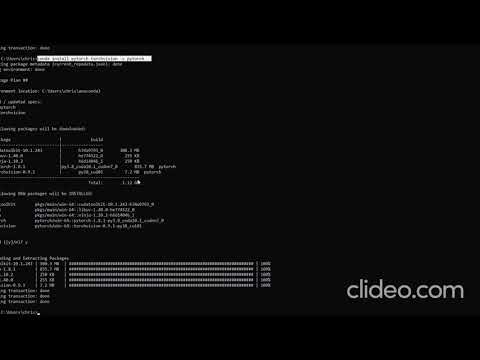
Found 42 images related to modulenotfounderror no module named torch theme




![Modulenotfounderror no module named torch [SOLVED] Modulenotfounderror No Module Named Torch [Solved]](https://itsourcecode.com/wp-content/uploads/2023/03/modulenotfounderror-no-module-named-torch.png)







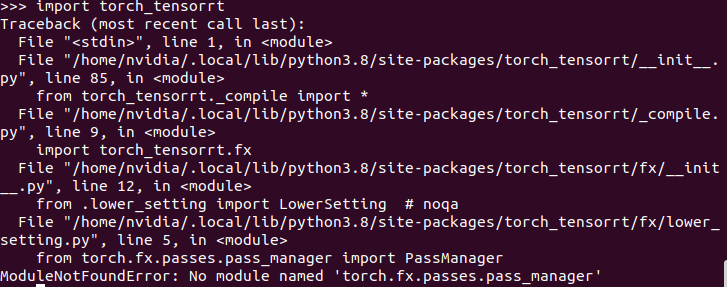






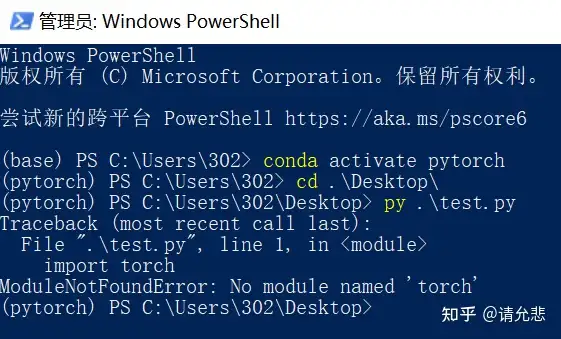






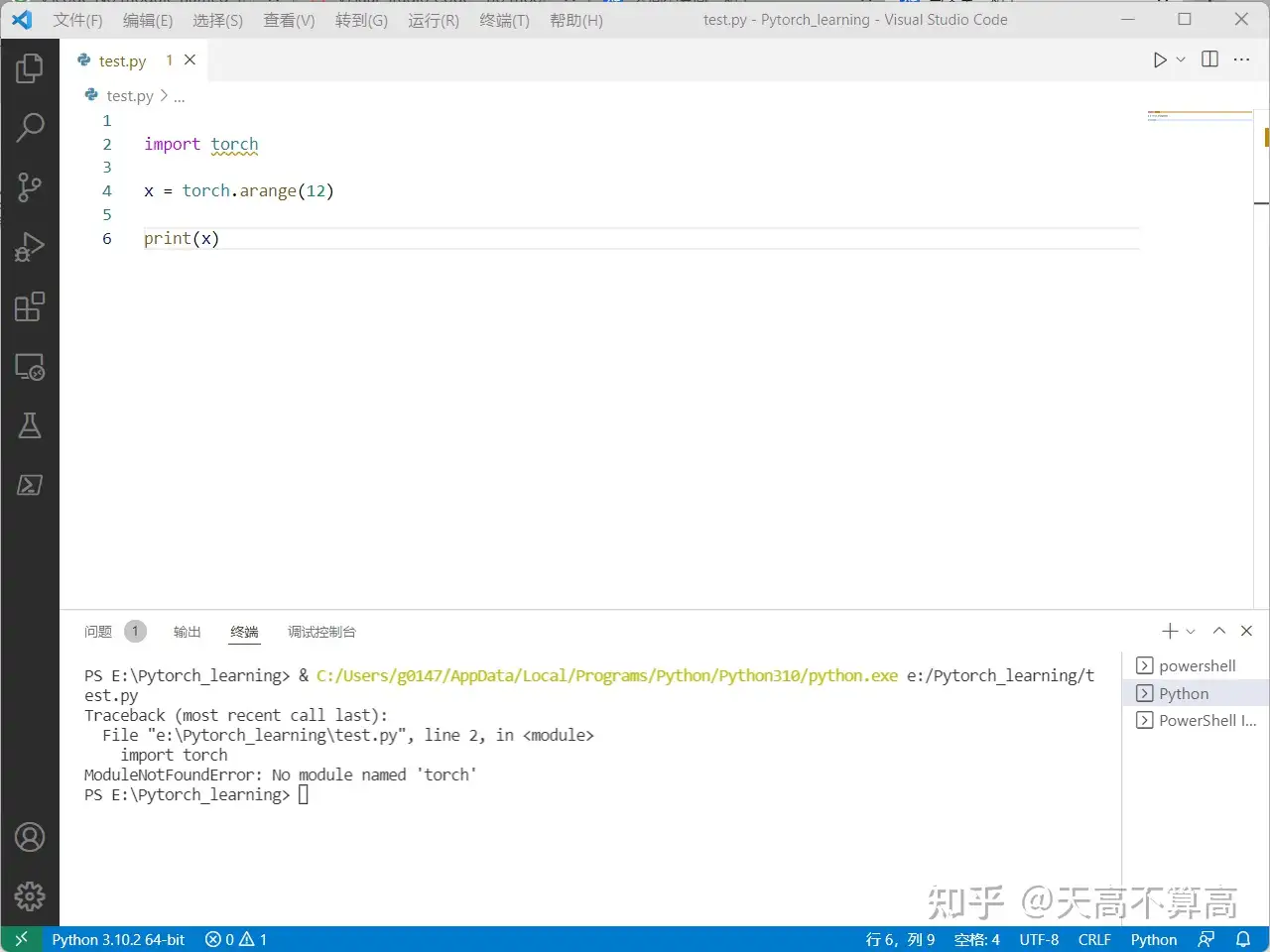



![python] ModuleNotFoundError: No module named 'torch' Python] Modulenotfounderror: No Module Named 'Torch'](https://blog.kakaocdn.net/dn/cEwhtn/btrGNCqOQa9/54zrlqKwKrgWGyFN0Tjvkk/img.png)
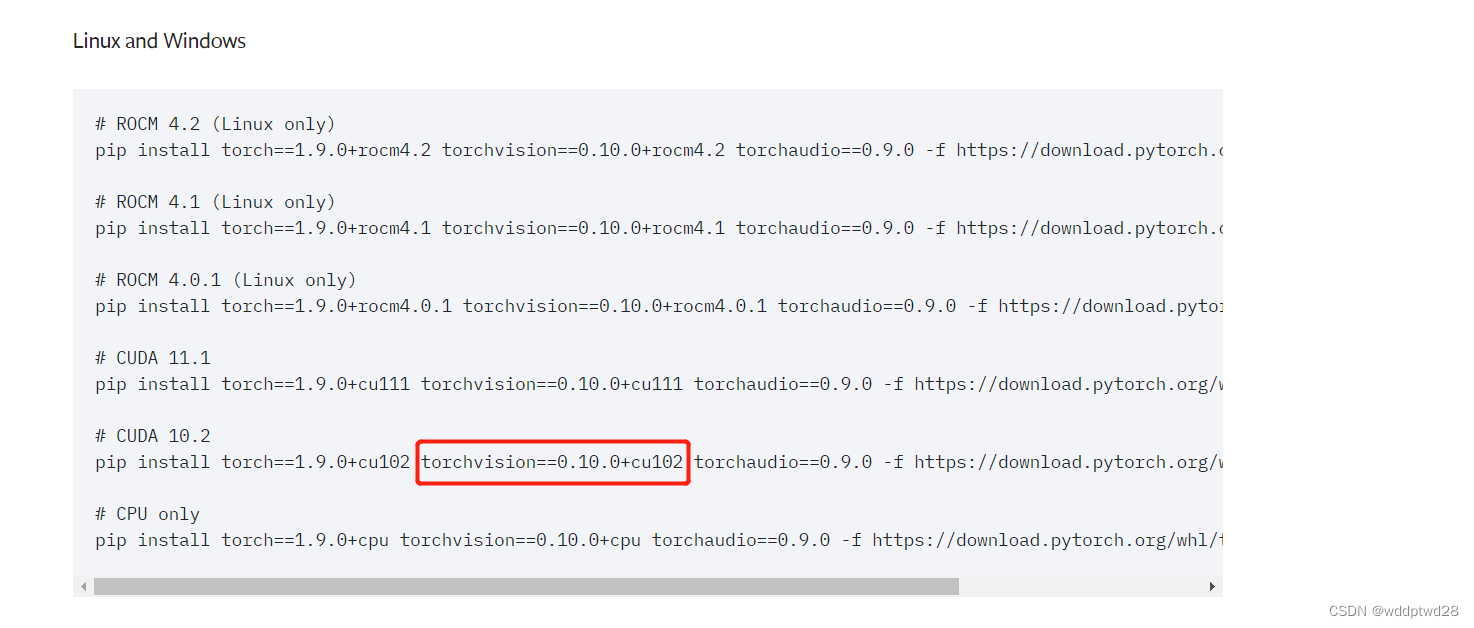

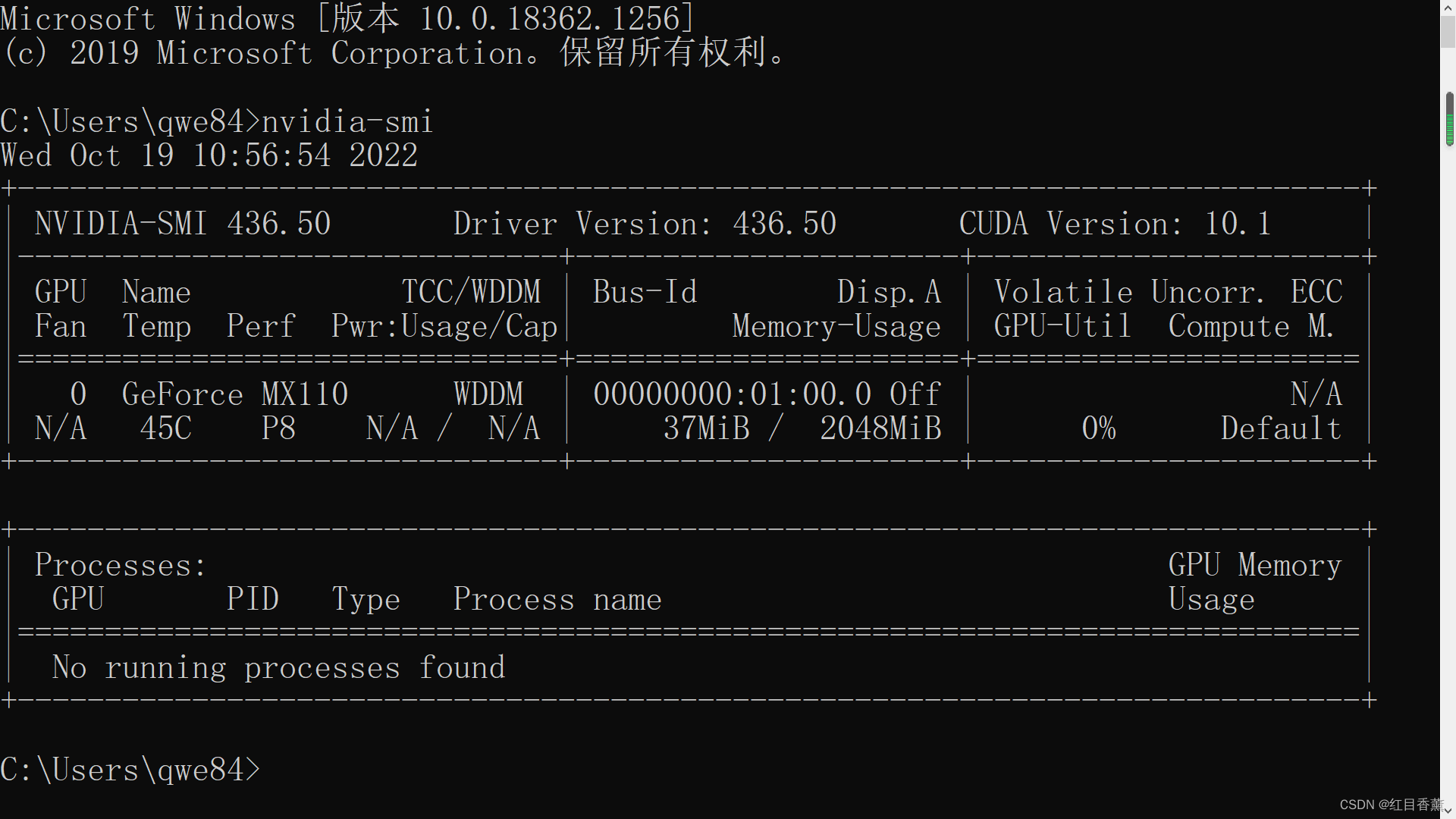

_how-to-fix-modulenotfounderror-no-module-named-error-in-python-124-vscode-tutorial.jpg)
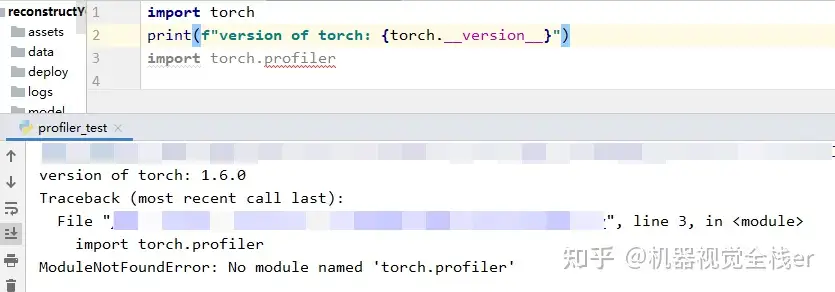

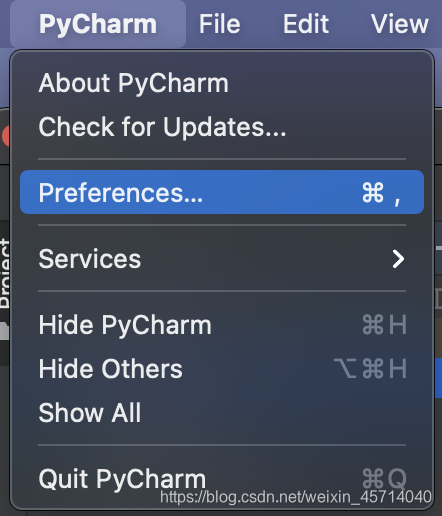


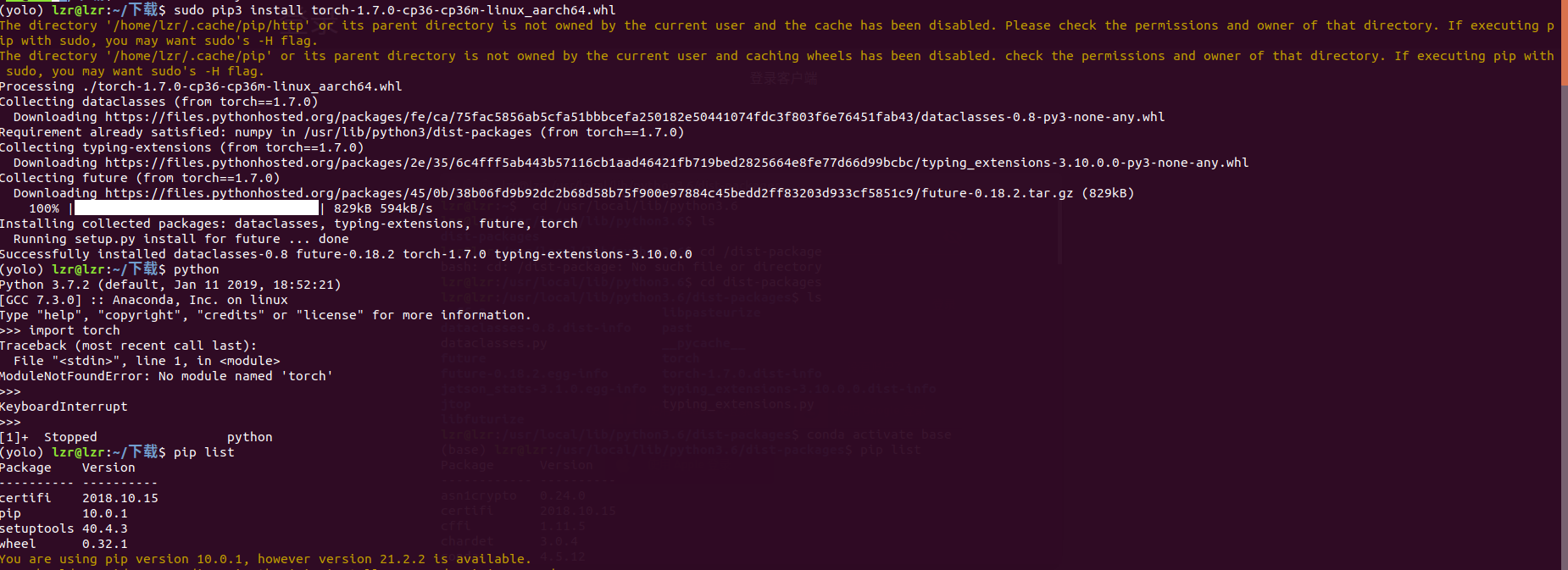



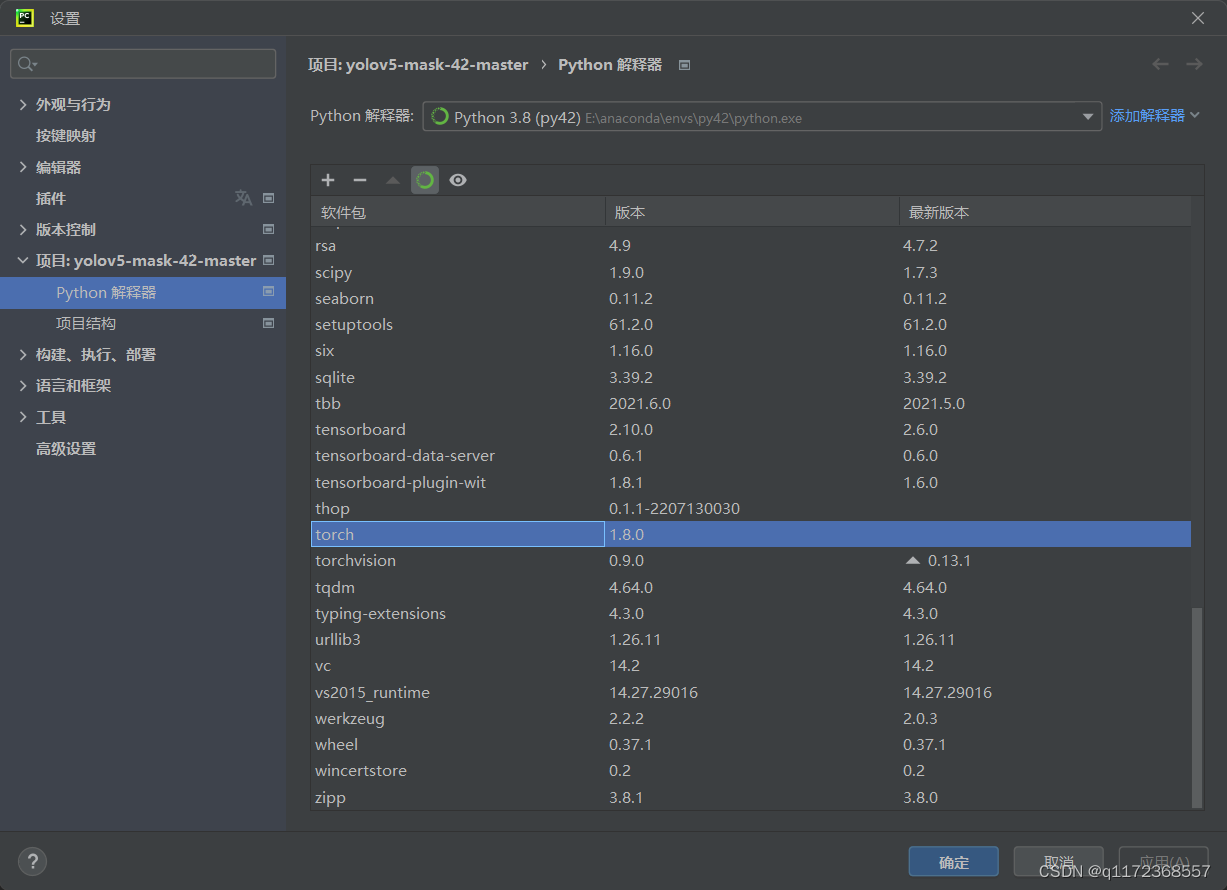
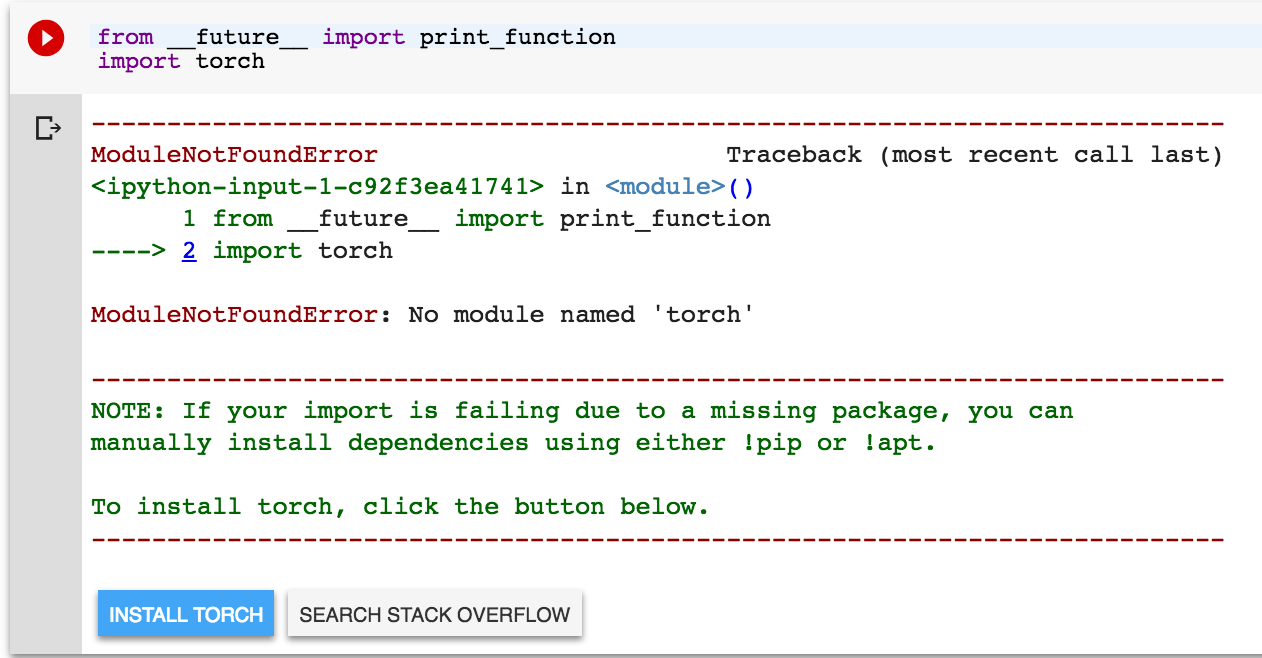
Article link: modulenotfounderror no module named torch.
Learn more about the topic modulenotfounderror no module named torch.
- python – No module named “Torch” – Stack Overflow
- Python ModuleNotFoundError: No Module Named ‘torch’
- Modulenotfounderror: No module named ‘torch’ (Fix the error)
- No module named ‘torch’ even if I installed it in multiple …
- Modulenotfounderror no module named torch in Python
- No module named ‘torch’ ( Ubuntu 18.04, python 3 )
- No module named ‘torch’ error – Educative.io
- No Module Named Torch: Troubleshooting The Missing Torch …
See more: https://nhanvietluanvan.com/luat-hoc